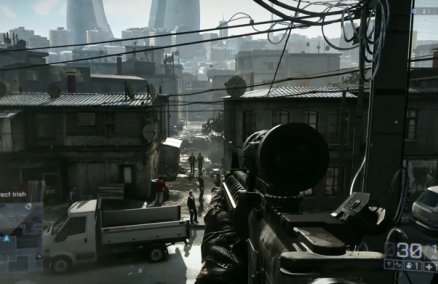Albert Camus once said, “We have art in order not to die of life.” With the myriad of shows lined up for the coming Singapore Arts Festival 2006, we must say we never felt more alive.
The festival is reputed for its revolutionary shows. As Festival Director Goh Ching Lee quips, “It is an iconic festival with a bold and progressive programming. It is known for its embrace of the contemporary and cutting-edge, for presenting recent works and developing new commissions by leading contemporary artists from Singapore, Asia and beyond.”
This year’s lineup is no less radical. Experimental and collaborative shows abound to expand the boundaries of different arts genres. We bring you our picks. Look out for these revolutionary performances that’ll keep our hearts thumping.
Made in Singapore
Quest (Jun 1-3) is a triple bill consisting of contemporary dance offerings by Korean choreographer Kum Eun Hee, Chinese artist Gao Jin Zi and our own Jeffrey Tan. The talents from the Singapore Dance Theatre will exhibit a range of dance moves, from the explosive to the subtle, as they perform one bill after another. Expect them to groove not to the usual Western music but to Chinese music delivered by the Singapore Chinese Orchestra in this world premiere.
The central theme linking all three dances is man’s struggle for release and freedom. Jeffrey’s offering in “Quest, F.U.S.E.” specifically unveils the intricate relationship between man and nature. A ballet to folksy music composed by Tang Jian Ping, it is one of his more experimental works to date.
Also taking to the stage is the world premiere Forward Moves (Jun 9-10), a quartet of dances that speak of hope, tenderness and heartwarming moments. Catch these innovative works by Aaron Khek, Kuik Swee Boon, Danny Tan and Elysa Wendi.
For a mix of Indian and Chinese music, catch Ghana Sangam (Jun 11). A spectacular concert making its premiere this festival, it will be led by local composer and flautist Ghanavenothan Retnam. Joining him are Sri Nantha Kumar and Wu Tong, well versed in the Indian instrument tabla, and the Chinese instrument, sheng, respectively. Get set for a unique musical journey where boundaries take a back seat to artistic creativity.
The Phiharmonic Winds (Jun 3) isn’t a stranger to applause and standing ovations. This wind ensemble will dish out energetic pieces by composers, Frank Ticheli and Leonard Bernstein. Highlights of this concert include the performance of Josephs Schwantner’s work: More than 50 percussion instruments will belt out rousing beats on stage.
Besides impressive dances and concerts, our local acts have a slew of compelling theatrical productions lined up as well. In Geisha (Jun 9-10), New York-based performer Karen Kandel and classical Japanese dancer Gojo Masanosuke will weave magic with tales of geishas, maikos (apprentice geishas), clients, and okamisans (mama-sans).
Stereotypes and preconceived notions are overturned in Geisha. As director Ong Keng Sen explains, “Geisha is a piece with a Japanese man, then a black woman, as the geisha. Cultural codes are scrambled, and there’s gender-bending. It will be fun.”
Intercultural project Mobile (Jun 17-18) throws the limelight on foreign workers with whom we rub shoulders with everyday. An offering by The Necessary Stage, it involves local artists as well as performers from Thailand, Philippines and Japan. Mobile questions the nature of relationships as cross-cultural interactions increase.
More than a year’s work went into Mobile, due to the extensive research involved. Members of non-government organizations in Bangkok and Tokyo were interviewed. Shelters were visited and migrant workers were met. As such, it’s not surprising Mobile is The Necessary Stage’s greatest attempt to date in deconstructing the concept of a homogenous Asia by means of intercultural works. As Co-Director Alvin Tan claims, “Mobile marks our largest effort to reintroduce Asia as multiple ‘Asias’ on the world stage and resist a reductive reading of the exotic Asia.”
For a peek at how urbanization affects our feelings, identities, desires and memories, check out A Stranger at Home (Jun 8-10). This Mandarin production by the Drama Box tells the experiences and hopes of a teacher, a lover, an old woman, a medium and a terrorist. Searching for security, these individuals make pertinent decisions which affect their lives.
Directed by the award-winning Kok Heng Leun, this combination of theater, music, film and words will be unveiled together with a film by acclaimed filmmaker Royston Tan.
Foreign Talent
It’s a wild ride with ropes, horizontal bars, harnesses and prostheses in bODY_rEMIX/gOLDBERG_vARIATIONS (Jun 15-16). Under the guidance of Canadian choreographer Marie Chouinard, dancers utilize strange devices to execute innovative dance movements and showcase unusual body shapes to Bach’s Goldberg Variations.
This outrageous and playful dance was inspired by life itself. As Marie quips cheerfully, “I am trying to celebrate the mystery of life and its manifestations. Since I was born, I am always fascinated by the body. I am amazed that I can stand, that I can walk, and more.”
Prominent choreographers from Europe, Jiri Kylian, Lightfoot Leon and Johan Inger present an awe-inspiring contemporary triple bill, Bella Figura (Jun 20-21). Kylian blurs the boundaries between dreams and reality in a sensual ballet, while Lightfoot Leon amuses with a refreshing work revolving around space and perception. To keep things at a high, Inger will put on an uplifting dance telling the experiences of three women and the men in their lives.
Set against the mesmerizing music of avant-garde composer Steve Reich, Rain (Jun 23-24) is an exhilarating dance performed by the dancers from Brussels-based company Rosas. Watch out for the eminent Anne Teresa De Keersmaeker who leads the dance troupe.
If you are in the mood for some ingenious theater, check out Phobia (Jun 21-24). This eerie and cheeky piece by Australia’s Chamber Made Opera takes the audience back into the world of sound effects’ mavens in the ’50s and ’60s. Performers use weird props and methods of making sound effects to Hitchcock’s film Vertigo. Windscreen wipers, ice, celery, rubber bands are all collaborators in this original performance. It’s an eye—and ear—opener.
An innovative theater that cuts across time and space—that’s Play on Earth (Jun 15-18, 22, 24-25) for you. This transcontinental world premiere is a collaboration between UK’s Station House Opera, Brazil’s Philarmonia Brasileira and our very own TheatreWorks. Artists from these three organizations will stage the performance in their respective locales simultaneously. Together, they will act out a tale that will be screened to audiences in all three countries. Directed by Jeffrey Tan, Singapore’s production stars Gerald Chew, Lim Yu-Beng and Noorlinah Mohamed.
This cutting-edge play sets itself apart from other plays by its production process. “The major difference in the production process as compared to an ordinary play is the technical challenges involved—from the equipment to the Internet connection. As we seek to make connections visually and emotionally across all three countries, there is also a lot of coordination and synchronization as well,” says Tan.
The Great War (Jun 16-17) is a brilliant show which uses miniature sets to enact battle scenes. Watch how beans, plasticine, parsley and matches are animated, and projected onto a screen in real time. Speaking of the mindlessness of war, this creative production by The Netherlands’ Hotel Modern is worth catching for its ingenuity.
If you dig anime and comics, don’t miss Austria’s offering Samovar—Check out Chekov (Jun 3-4). Cartoons created by playwright Anton Chekov will be penciled live by Marcel Keller and Anja Sebanz and projected onto a screen with the help of clever camera techniques. Watch how these cartoons tell familiar stories which can be related to. It’s irony and dark humor at their best.
It’s a matter of life and death in Death and the Ploughman (Jun 2-4). Staged by USA’s SITI Company, the story was written by German Johannes von Saaz during the Medieval and Renaissance period of 1400 and adapted into English by Michael West. A restless farmer debates with death over the passing of his beloved, questioning faith, authority and hierarchy. Look out for razor sharp dialogue and rigorous acting.
And there you have it. A smorgasbord of daring and adventurous works are lined up in the coming Singapore Arts Festival 2006. With the myriad collaborations and inventive shows, the festival seeks to bring our arts scene to new heights. It’s bold and progressive art.
Singapore Arts Festival 2006 is from Jun 1-25 at various locations in town. Log on to www.singaporeartsfest.com for more information.
Safe Bets
Singapore Arts Festival hosts a wide diversity of shows. You bet there’s something for you if you dig more traditional entertainment as well.
Drought and Rain—Two Memories, Two Generations (Jun 2-3) Dancers from Vietnam exhibit their dexterity. Franco-Vietnamese choreographer Ea Sola presents a moving show about Vietnamese society.
The Vegetable Orchestra (Jun 7-9) This is where playing with food is allowed. Check out this orchestra which ditches flutes and trumpets for carrots and cucumbers to make music.
Jerusalem Dreaming (Jun 15-16) It’s a haunting concert with Israeli artist Victoria Hanna singing ancient music. She will share the stage with ensemble Israeli Contemporary String Quartet, and musicians from Mongolia and Germany.
Oslo Philharmonic Orchestra (Jun 21-22) Presenting Nordic works and acclaimed classical pieces, Norway’s respected export is bound to thrill.
John Williams and Richard Harvey’s World Tour (Jun 9) Find two amazing musicians fiddling with over 20 musical instruments. From the Irish harp to African drums, this concert promises to be memorable.
Advertisement






























